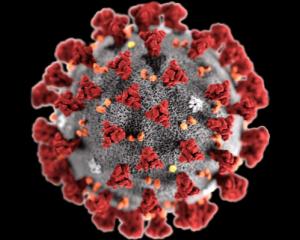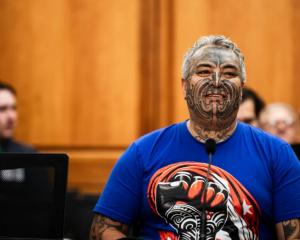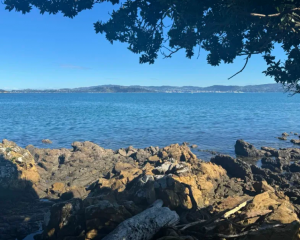After years of threatening to inject its unwelcome wet and dry extremes into our seasonal climate, the chances of the El Nino bogeyman shaking up the weather later this year are now greater than ever, scientists say.
Following significant changes in the last two weeks, Australian Government's Bureau of Meterology has just confirmed that El Nino thresholds had been reached in the tropical Pacific for the first time since March 2010.
Climate scientist Professor James Renwick, of Victoria University, said an El Nino system toward the end of the year could be the most notable the country has seen in perhaps a decade.
In New Zealand, the ocean-driven system typically meant farmers in the western, wetter parts of the country often faced significant damage to pastures from too much rainfall, and it was also harder for stock to thrive in the constant wet.
Those in the east, faced with dry conditions, needed to consider food availability for stock.
El Nino events have been devastating in the past -- the last severe system in 1997 and 1998 caused a major drought that cost the country hundreds of millions of dollars.
Seas along the equator were presently abnormally warm right across the Pacific, from the South American coast to the Solomon Islands.
This unusual warmth had increased over the last few weeks, with seas now more than 2 degrees above normal near South America, and more than one degree above normal elsewhere along the equator.
"This so-called warm tongue of water along the equator is the classic El Nino signature," MetService meteorologist Georgina Griffiths said.
"And it has intensified in recent weeks."
The atmosphere is playing ball, too, with weaker trade winds observed along the equator.
This, too, was the traditional El Nino atmospheric signal -- and it altered where the rain falls in the tropics.
The latest climate predictions indicated a solid chance -- around 70 per cent -- that El Nino conditions would continue through the southern winter and spring.
What could it mean for New Zealand?
At this stage it was too early to tell whether this El Nino will be a strong event, as the models still showed a fairly wide range of outcomes.
Seas around the New Zealand coastline were already cooling more rapidly than is normal at this time of year, which was consistent with the typical El Nino response in our region -- markedly cooler sea temperatures over winter and spring.
"Sea temperatures are important, because to a certain extent they influence air temperatures in our coastal towns and cities," Mrs Griffiths said.
"But perhaps the most obvious impact El Nino brings to New Zealand is an increase in southerly to southwest winds over winter and spring."
Not surprisingly, most El Nino winters were cooler than usual, right across the country.
But the typical rainfall response to El Nino was more complicated, as it depended on what season and which region.
"The chances of a relatively dry winter increase during El Nino for the western North Island -- Northland, Auckland, Waikato, Waitomo, Taumarunui and Taranaki -- as well as for Nelson and Marlborough," she said.
"But in the North Island, we may not notice this effect very much from day to day, since winter usually yields more than enough rain."
Spring, between September and November, was when El Nino really started to flex its muscle here, she said.
Typically, El Nino produced a stormy, windy spring, which was often extremely cold.
The chances of a wet spring were increased during El Nino in the west and south of the South Island.
In contrast, the western North Island, Nelson and Marlborough, tended to be drier than usual.
In drought-prone areas like Canterbury and Eastern North Island, El Nino brought drier conditions as the country headed into summer.
"These regions are impacted by El Nino towards Christmas, in fact during the driest time of year."
Watch this space: climate scientist
A weaker El Nino nearly eventuated last year, but the ocean warming never combined with the trade winds to create a system, said Professor Renwick said.
But if one came this year -- as the models presently predict -- it could be the biggest in years, he said.
"This year things seem to be coming together better and an El Nino event should strengthen over the next several months, and last through the end of the year.
"Although an El Nino brings weaker winds and warm seas in the tropics, New Zealand feels the opposite -- on average, the seas around New Zealand cool off and the westerly winds that dominate our climate strengthen, and turn more to the southwest.
"If things go the way of an average El Nino, we would see cooler than normal temperatures in many places in the second half of the year, with the possibility of dry conditions developing in the east and north of the country.
"One thing we do know though - every El Nino is different, so we need to watch closely as the current event develops."
What is El Nino?
El Nino -- meaning "The Little Boy" or "Christ Child" in Spanish -- is a natural feature of the global climate system.
It was given the name due to the periodic development of unusually warm ocean waters along the tropical South American coast and out along the Equator to the dateline, but was now it is more generally used to describe the whole "El Nino -- Southern Oscillation (ENSO) phenomenon" -- the major systematic global climate fluctuation that occurs at the time of an "ocean warming" event.
The National Institute of Water and Atmosphere explains that El Nino and La Nina refer to opposite extremes of the ENSO cycle, when major changes in the Pacific atmospheric and oceanic circulation occur.
When neither El Nino nor La Nina are present -- usually referred to as "neutral" or normal conditions -- trade winds blow westward across the Pacific, piling up warm surface water so that Indonesian sea levels are about 50cm higher than those in Ecuador.
Cool, nutrient -- rich sea water welled up off the South American coast, supporting marine ecosystems and fisheries.
Relatively cold sea temperatures also extended along the equator from South America towards the central Pacific.
High rainfall occured in the rising air over the warmest water to the west, whereas the colder east Pacific is relatively dry.
During El Nino events, the trade winds weaken, leading to a rise in sea surface temperature in the eastern equatorial Pacific and a reduction of "up-welling" off South America.
Heavy rainfall and flooding occur over Peru, and drought over Indonesia and Australia.
The supplies of nutrient rich water off the South American coast are cut off due to the reduced up-welling, adversely affecting fisheries in that region.
In the tropical South Pacific the pattern of occurrence of tropical cyclones shifts eastward, so there are more cyclones than normal in areas such as the Cook Islands and French Polynesia.
By Jamie Morton of the New Zealand Herald











